11 Best Places to Retire as a Single Expat
16 min readWhat’s your take on starting a new life abroad? Whether you’ve been dreaming about the move for years or you’re new to the “retire overseas” world, chances are you find the whole thing a little intimidating. And more likely than not, you’re wondering where to start. If so…
Welcome to the club.
I’ve been in your shoes, wishing someone would just draft me a game plan… just tell me what to do. You’ve heard the old refrain, I’m sure. (How do you eat an elephant? One bite at a time.) To which my response was: Yes, that’s very clever. But where do I start? Every year, we hear from an increasing number of Americans who are considering a big move. (And if even well-traveled, world-savvy couples express concerns, is it any wonder that those of us who are single have concerns of our own?)
Over the years, we’ve found that the happiest expats on our beat followed more or less the same game plan. First, they profiled themselves (and let me add that the most successful ones were brutally honest). They wrote down all their wants and needs. And with that list in hand, they were ready to start researching countries.
But instead of spinning the globe, they considered a curated list. Countries that had a lot to offer to potential expats. Places with welcoming policies, friendly people, quality healthcare, affordable housing, well-established expat communities… or all of the above. For me as a woman going solo, I was also searching for places with lots of fun activities, supportive neighbors, and plenty of other singles. As a result of my research and travels, the “singles report” was born: Single and Ready to Move Overseas: Your Guide to Joining Happier, Healthier Expats Abroad.
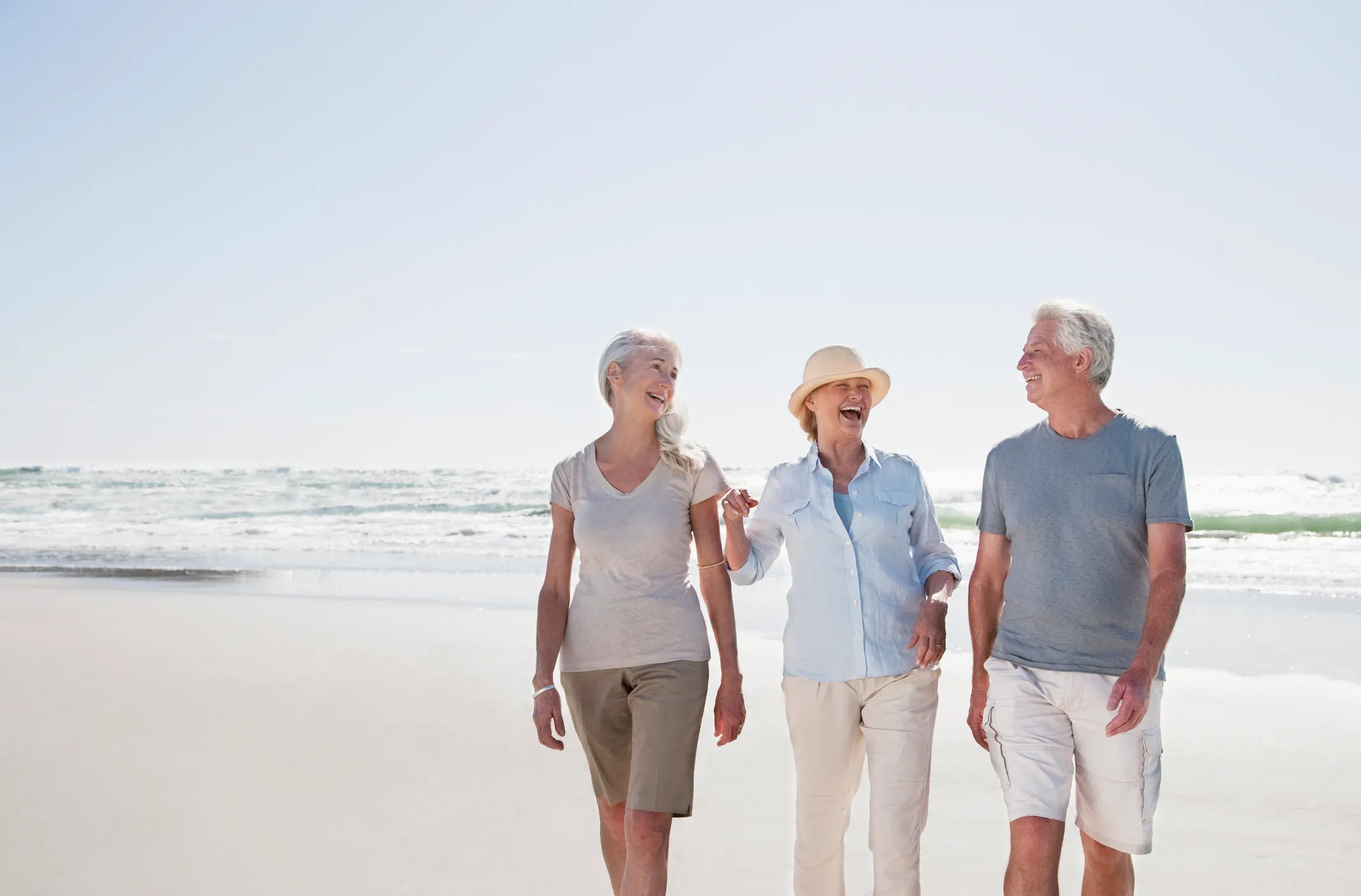
©iStock/Robert Daly
How safe is it, especially for singles? Will I need to learn a new language, or can I get by in English? Will I make friends? What will I do all day? These are important considerations. And it’s natural to be a little worried. But no matter which country you choose, one thing is universally true: In the expat world, you’re never on your own.
Whether you’re drawn to the romance of old-world Europe, the tropical climes of Central America, or the exquisite foods and landscapes of Asia, there are expat enclaves where you can find support and friendship… and an exciting new life. Places where new arrivals feel welcomed and included… and where experienced expats are happy to share what they’ve learned to help make your journey even smoother.
Choosing one of these communities… whether large or small… whether remote or as urban as they come… will give you the chance to meet like-minded people who’ve been in your shoes. Often there are plenty of networking opportunities—interest groups, socials, enriching cultural and philanthropic activities—you name it. And without fail, expats (whether they self-describe as shy or outgoing) tell us they found it easy to make friends… the kind of friends who become like family.
Are you searching for ways to make your social security check or nest egg stretch further? Concerned about the cost of healthcare and medications? Eager to make the most of your retirement years? Excited to explore new and different destinations? If your answer to any of these questions is “yes,” then read on. Open yourself up to the world of expat living, and soon you’ll be ready to plan a scouting trip to see these spots for yourself.
The jewel-bright turquoise waters of the Caribbean… mountain retreats with lush cloud forest backdrops… elegant pieds-à-terre in historic World Heritage destinations…. Whatever your ideal live-overseas location, this wide, wonderful world has a place for you. And we’re here to help you find it.
Here are our current favorites…a wide variety of places where you can live the single life… and live it well.
The Boquete Highlands, Panama
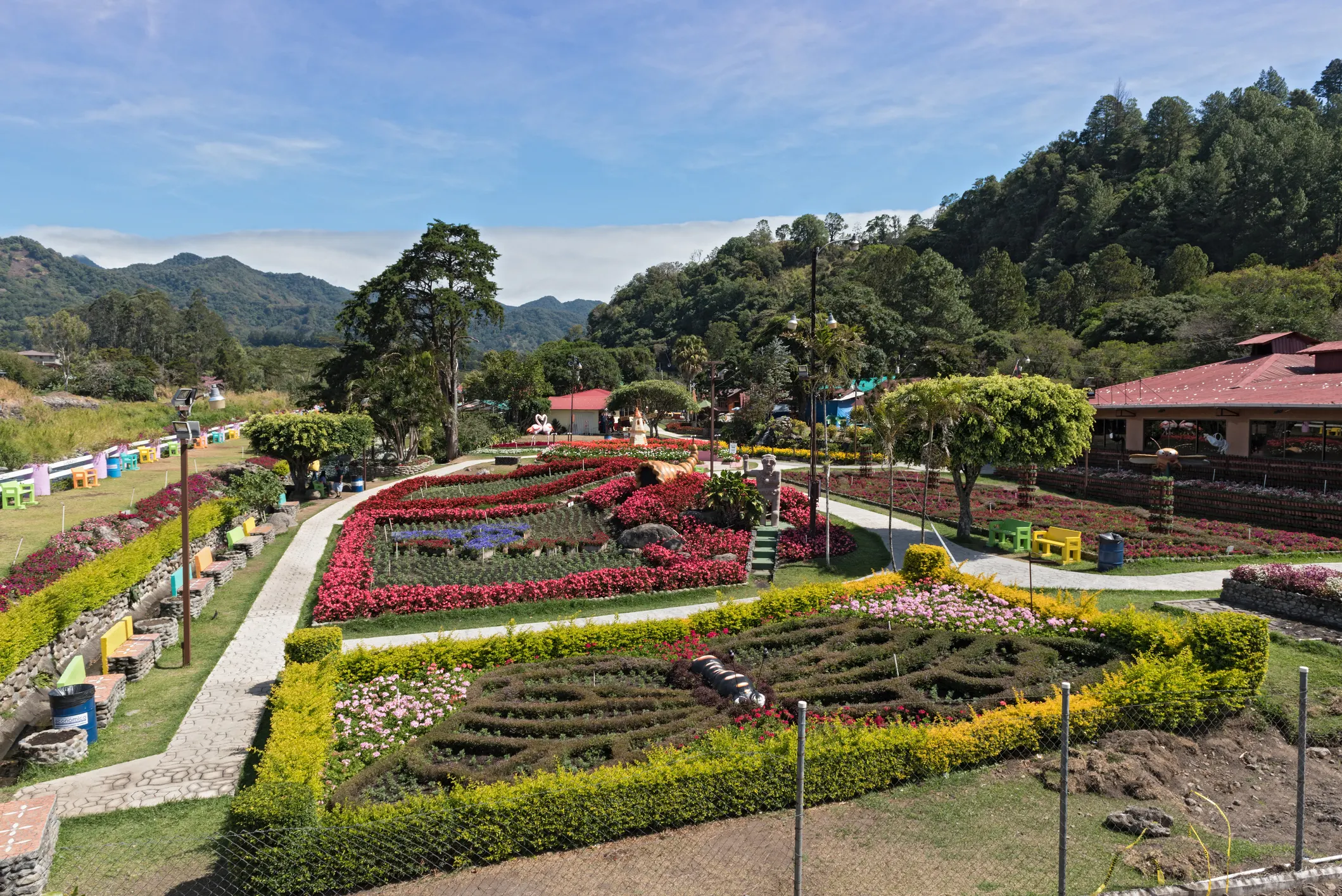
©iStock/Rainer Lesniewski
One of the world’s renowned retirement havens, Boquete has year-round spring-like temperatures and dramatic, verdant mountain views that can only be described as spectacular. It tends to attract active expats who love being outdoors, hiking, rafting, rock climbing, or simply enjoying the colorful birds, butterflies, flowers, and more.
About a 45-minute drive from the convenient little city of David, the district of Boquete sits at an altitude of about 3,500 feet. With a valley surrounded by pine-covered hills, its sweet Swiss-style chalets and cottages have lured expats from Europe, the Americas, and beyond.
Boquete’s local and foreign-born residents care deeply about it. They have come together in volunteer groups and civic organizations to improve the quality of life for all, and social events abound. All are welcome… nature lovers, artists, foodies, alternative healers, musicians, and more feel perfectly at home in this highland hamlet.
For expat Linda Sherman, “It wasn’t just the coffee, it wasn’t just the climate, and it wasn’t just the 200-foot cliffs surrounding Boquete.” There was so much more to why this former broadcaster chose to move from Maryland to the mountains of Panama. “It was the cost, the community and the culture of giving,” she says. Cutting her housing expenses by more than 50% and no longer needing to spend $500 to $600 a month on air conditioning or heating (she needs neither in Boquete) was just the start.
Bottom line: Boquete’s beauty and active “Community of Doers” has helped make it one of the most popular expat destinations in the world.
Panama is tropical and humid at sea level, with some drier areas along the Pacific Coast, just outside Panama City. Here, the Coronado region is known as the Arco Seco, or Dry Arc, thanks to its constant sunshine and relatively low annual rainfall (40 to 60 inches, compared to more than 120 on the Caribbean coast).
Nearly every day in Coronado starts with bright sunshine. If it does rain, it’s usually for only an hour or two in the afternoon. It’s no wonder that it’s known as the weekend destination of choice for Panamanians. And it’s where I’ve chosen to make my home…
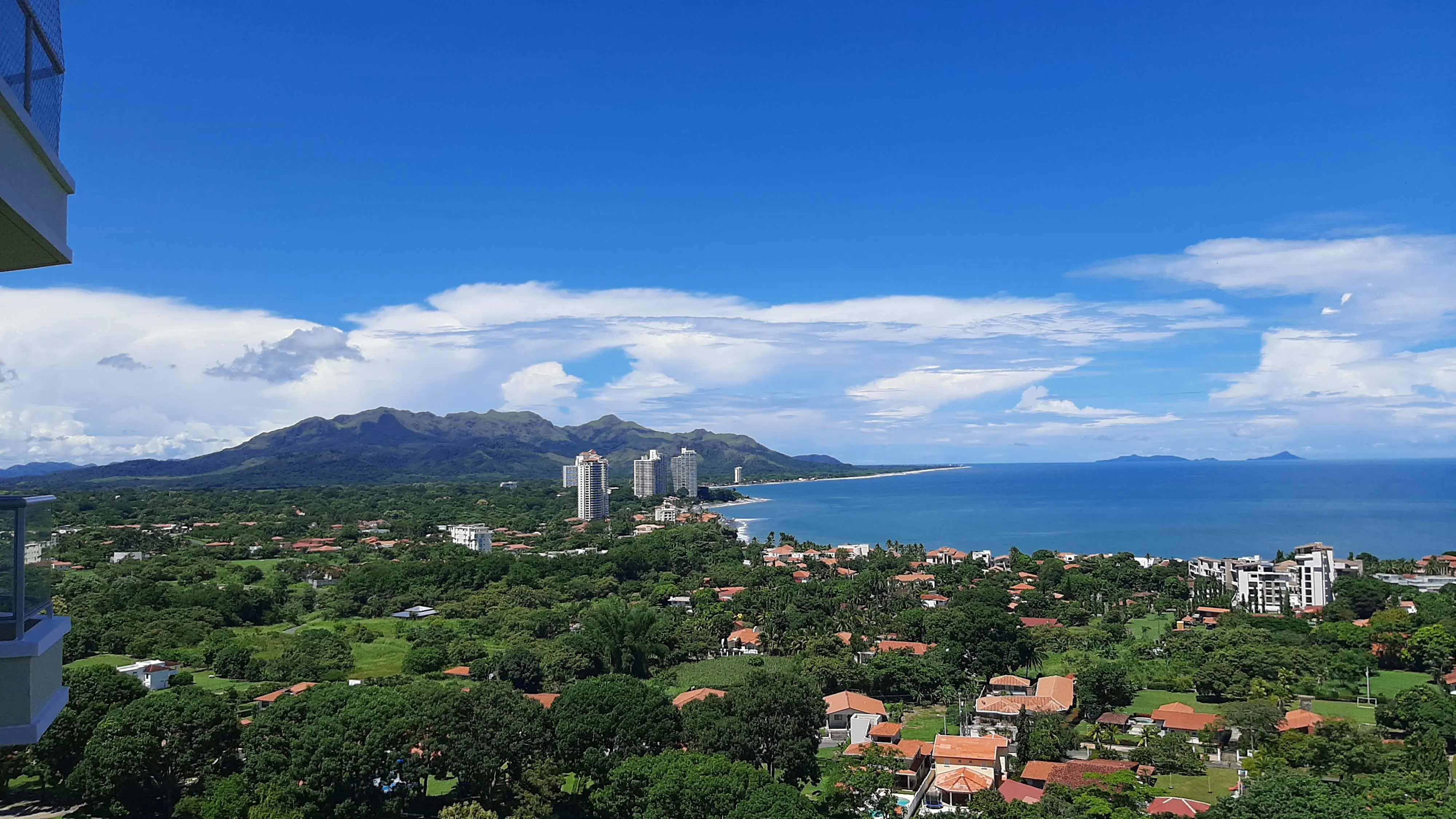
When I saw this view and learned my 1,000-square-foot condo would only cost me $155,000, I was sold.|©Jessica Ramesch
The little town has grown into a hub in recent years, and our retail plazas are filled with shops and supermarkets. We have amazing local seafood and fruit and vegetable stalls, but whether I need paint and power tools or champagne and caviar, I’m covered. (Seriously, my last shopping list included a new drill bit and sandpaper from the local home improvement store, and next door, I got prosecco, orange juice, smoked salmon, cream cheese, bagels, and capers for a brunch party.)
I’m spoiled for choice here. I could live here on $2,523 a month. (I know that seems like a weirdly specific number—I keep close track of my costs and spending so I can prove to myself, again and again, that I made a wise decision in moving here.)
However, I moved here to enjoy more of life’s little luxuries—not to have to scrimp and save—so I usually spend closer to $3,054 a month or $36,648 a year—including more than a few trips to incredible Caribbean and mountain getaways right here in Panama.
Our community is close-knit and active, with many playing golf, tennis, pickleball…you name it. Every evening, there’s something going on. It’s easy to make friends and enjoy life here as a single. (I found it too easy, to be honest, and had to start saying no to some invitations.)
Simply enter your email address below to sign up for our free daily postcard e-letter and we’ll also send you a FREE report on The World’s Top 10 Retirement Havens for 2024.
By submitting your email address, you will receive a free subscription to IL Postcards and special offers from International Living and our affiliates. You can unsubscribe at any time, and we encourage you to read more about our Privacy Policy.
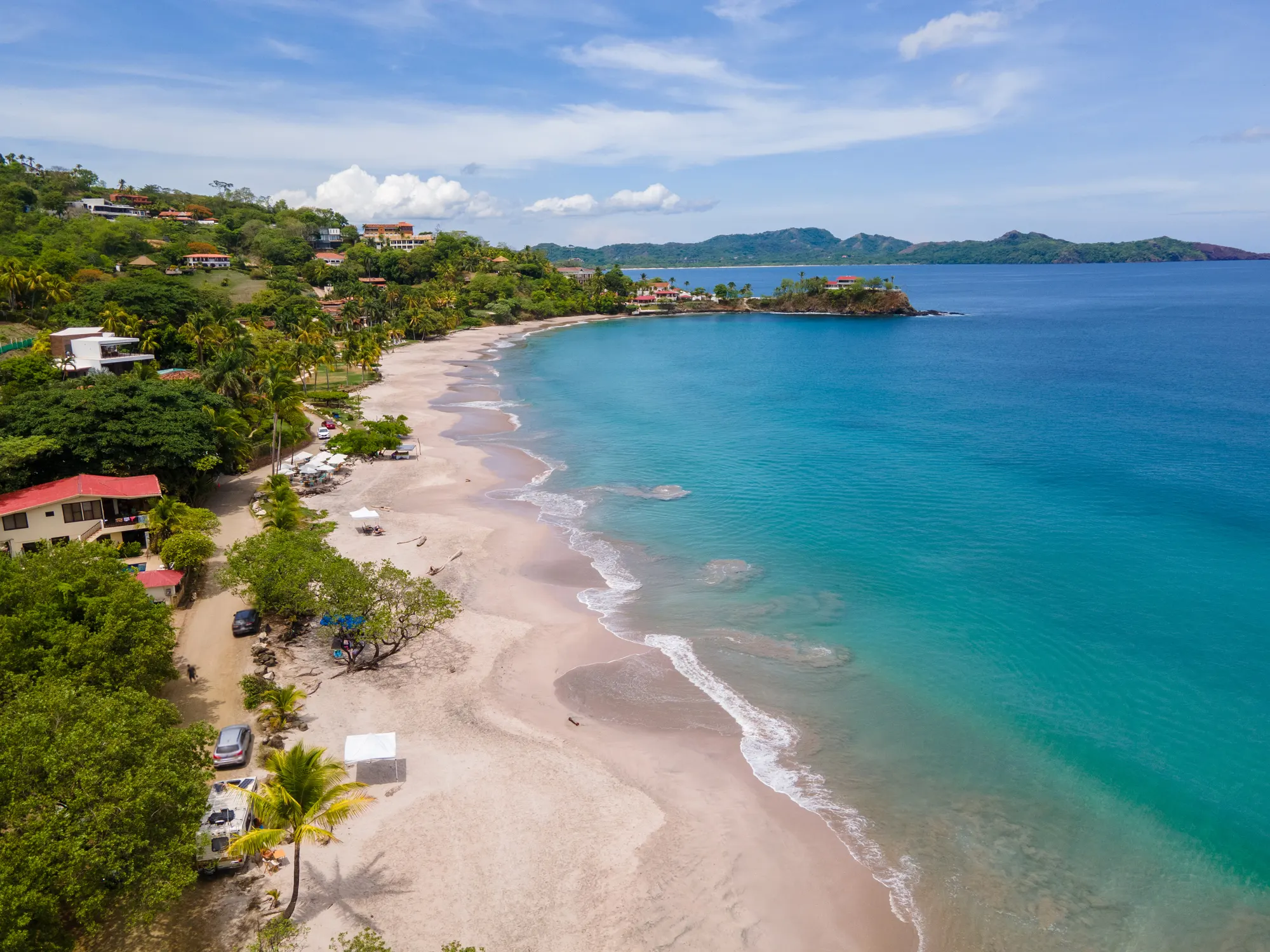
©iStock/Mystockimages
Guanacaste is home to more than 65 of Costa Rica’s nearly 300 beaches. Some are little more than remote outposts, while others are buzzing beach towns drawing expats and international tourists from all corners of the world. “In fact, a million people visit this region each year, and they come because it’s so stunning with so much to do,” says IL international real estate expert Ronan McMahon.
Communities like Playas del Coco, Flamingo, Tamarindo, and Nosara offer conveniences for daily living, business opportunities and infrastructure, and a natural hub for fun things to do. The coast is dotted with plenty of up-and-coming towns, as well.
If you’re not quite ready to retire, and might want to supplement your income with a vacation rental, this could be a great place to look. Find a beach to suit just about any lifestyle or activity you want… whether large or small, Costa Rica’s Gold Coast beaches check all the boxes… beautiful, welcoming, and clean.
“Here I’m surrounded by expats and visitors from around the world, but living on the beach also helped me slow down and connect to the earth’s energy,” says single remote worker and IL correspondent Bekah Bottone. “The slower pace of life is one of the joys of living here,” she adds. “My goal has always been to live a life I don’t need a vacation from—and I found it here on the gorgeous Pacific coast of Costa Rica.”
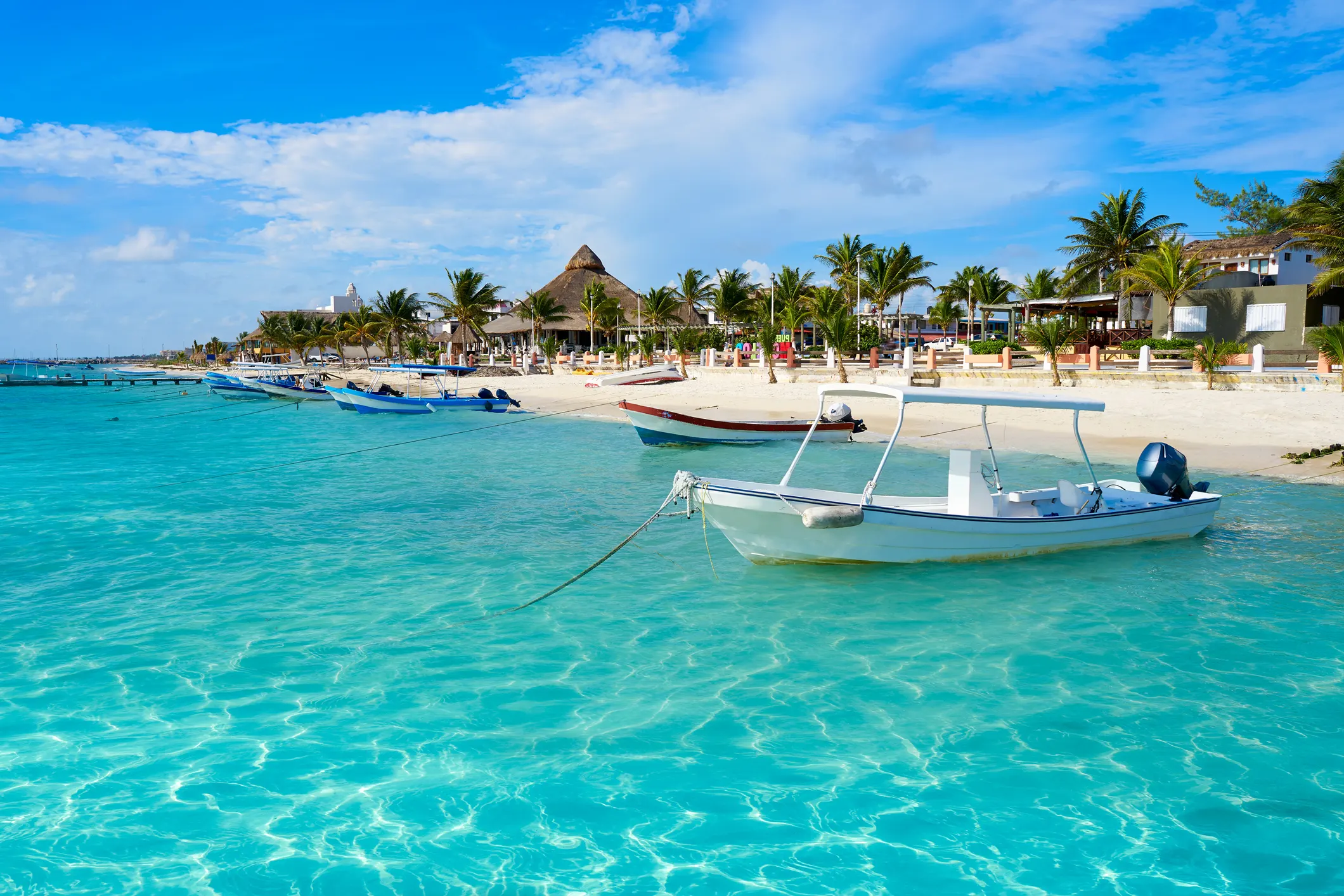
©iStock/LUNAMARINA
If you’re single and in search of a tropical retirement destination, Mexico’s modern, showstopping Yucatán Peninsula deserves a place on your shortlist. Nestled between the Caribbean Sea and the Gulf of Mexico, the Yucatán features warm, sunny weather and a dazzling array of picture-perfect beaches… with an equally dazzling array of affordable lifestyle options.
With the established expat populations that are thriving here (and have been for many years), there are countless opportunities for newcomers looking to build a social network and get involved with the community. The rich Maya history and culture—including the incredible culinary offerings—make this tourism hub a major contender in our world.
“Being ex-Navy, the ocean is one of my great loves,” says Bel Woodhouse. “Living on a Caribbean island with year-round warm weather, surrounded by some of the clearest water in the world is a dream. Swimming with swaying sea fans, vibrantly colored tropical fish, and—if I’m lucky—a turtle or eagle ray for company is heavenly. For me, this is the perfect way to stay healthy. A fun exercise that doesn’t feel like exercise. (It’s hard living in paradise sometimes… I just wanna go play!)”
The cost of living is another plus. “Yesterday, I had an emergency visit to the dentist, Dr. Miguel, who is professional and exceptionally clean… and kind and caring. The appointment, x-rays, and specialist consult only cost me $29 (500 Mexican pesos). Plus, I learned that the pharmacy will give you the antibiotic injection for only 20 pesos—less than $1.50!”
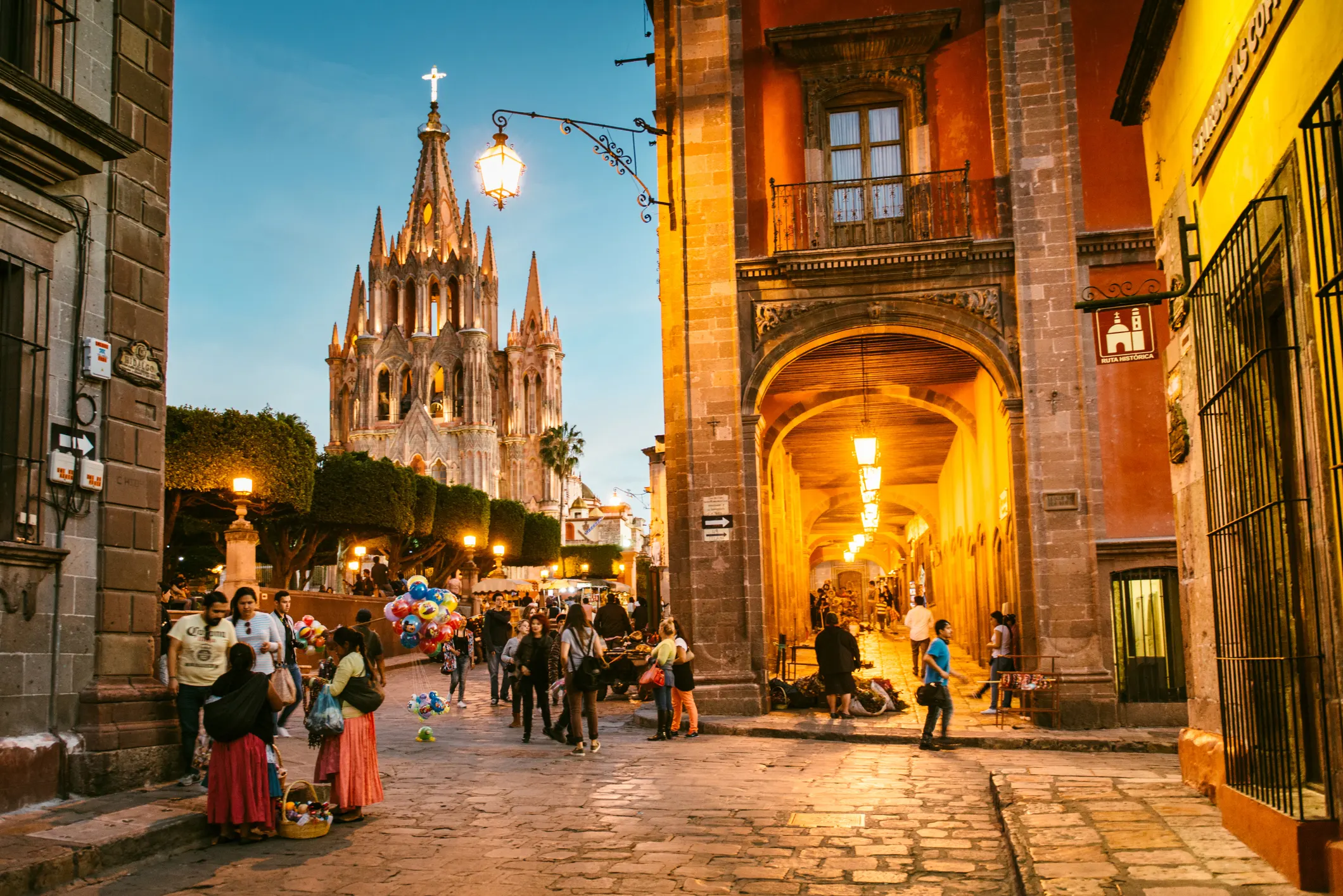
©iStock/ferrantraite
With one of the world’s great temperate climates and home to one of the world’s great arts and culture destinations, San Miguel is about as charming as a place can be.
Its colonial centro is a UNESCO World Heritage Site, meaning landmark homes, churches, and more are charged with retaining their historical, original appearance. Narrow cobblestone or flagstone streets are lined with homes in shades of yellow, red, and orange with terracotta tile roofs.
Expats make up about 10% of the town’s 70,000 residents, and the population swells during the northern hemisphere’s winter months, when Canadian, American, and European snowbirds flock to town.
Cynthia Campbell had a close friend who retired in San Miguel and encouraged her to check it out. Also single at the time, Cynthia decided to go for it. “I loved the people, the art, the cultural events, and the beauty of the historical city,” she says.
For the next few summers, Cynthia returned to the colonial city, even driving herself down from Palm Springs. “I checked out real estate rentals and home prices while exploring the open-air produce markets, the neighborhoods, parks, and celebrations… I even took a mix of classes—from dancing to ceramics. Everything was perfect! And the cost of living here is at least 30% to 40% less than that in Palm Springs,” she says.
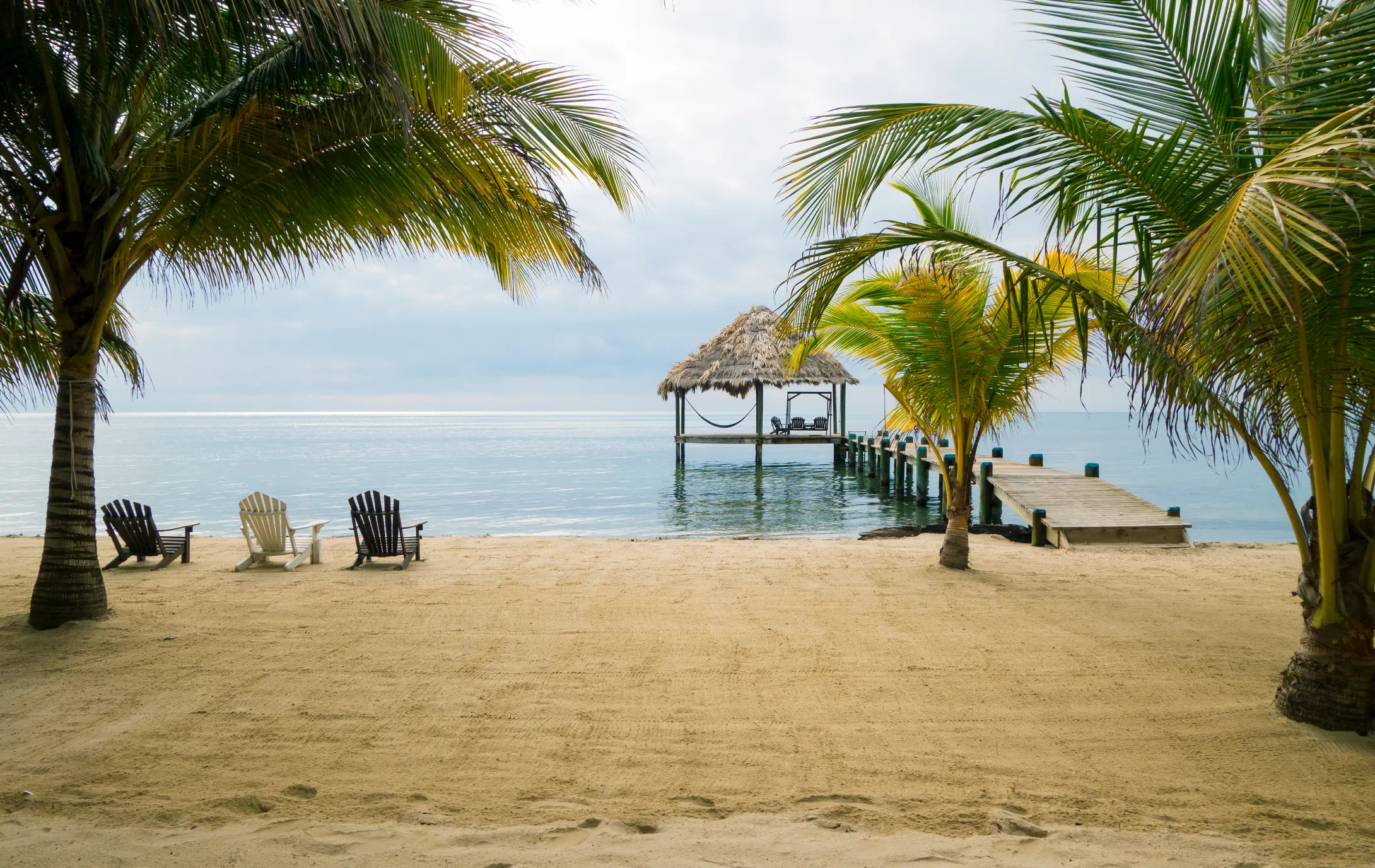
©iStock/jstepheniee
For potential expats nervous about learning a new language, it doesn’t get much easier than English-speaking Belize. As beautiful as the Riviera Maya, it boasts multiple locations where an expat—especially a single one—could be happy, thanks to the friendly people.
And though we love Ambergris for ocean sports during the day and partying at night, our attention has turned to Placencia, located on the bottom of a 16-mile peninsula in the south of the country. Nestled in a wide bay with sugary beaches, it fronts the Caribbean Sea and a dazzling freshwater lagoon to the west.
It’s where expat Jana Belknap has made her home… and her business, The Little Wine Bar. She’s able to showcase not just great wines but also an increasing selection of local products, such as spicy beef sticks, triple cream cheese, and habanero jelly. Placencia being one of the country’s top tourism destinations, Jana earns enough from the business “to enjoy a comfortable house on the water, travel for pleasure, and also get home to see family.” But she says her business will always take a back seat to enjoying life.
“My future goal is to open November through August, so I can close for two months, during the low season” she says. Life on the beach with two months to travel every year. Life doesn’t get much better than that…
Simply enter your email address below to sign up for our free daily postcard e-letter and we’ll also send you a FREE report on The World’s Top 10 Retirement Havens for 2024.
By submitting your email address, you will receive a free subscription to IL Postcards and special offers from International Living and our affiliates. You can unsubscribe at any time, and we encourage you to read more about our Privacy Policy.
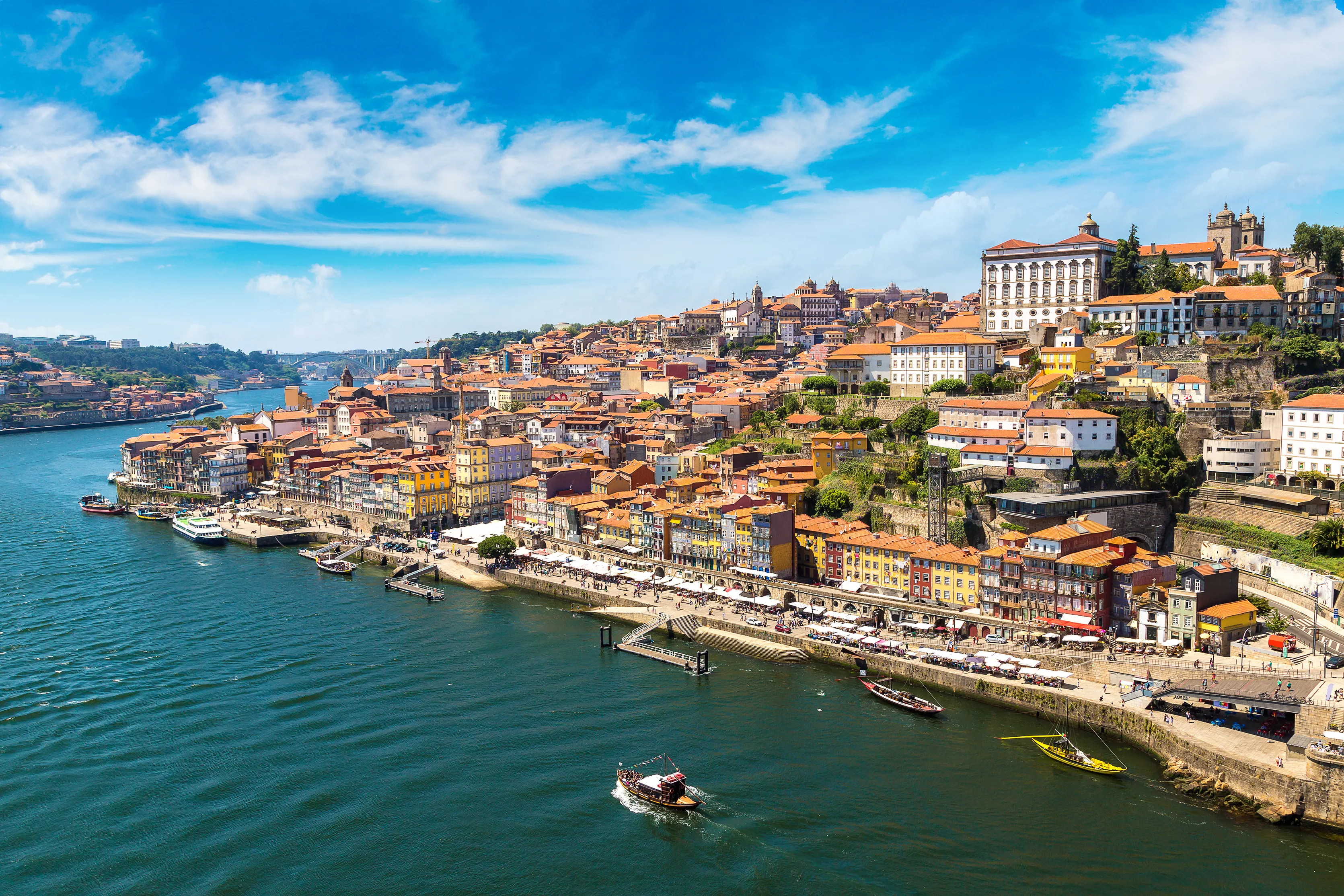
©iStock/bloodua
Where the Douro River meets the Atlantic, Porto is Portugal’s second city, known for the vibrant restaurants and cafés along its scenic riverfront. Porto has a small city’s friendliness and an international destination’s amenities.
Head for the golden sands of the Atlantic, just 15 minutes away by metro. Or simply dip into one of the many wine cellars across the city, where you can take a tour and, of course, sample the house port wine.
Porto’s cool, wet climate is similar to that of the Pacific Northwest. With summer averages in the mid-to-high 60s F, elegant parks, leafy boulevards, and cobbled streets lined with historic buildings all invite easy exploration.
“I’m lucky enough to live the life of a wandering writer, able to explore new cities for a month or more at a time,” says Kevin Casey. “Of all the places around the globe I’ve visited, one stands out for its laidback, Old-World charm and user-friendly appeal: Porto.
“Some evenings, I amble over to a tiny local bar on my own for a glass of port and pesticos (sort of like tapas) and some live music or maybe trivia night,” says Cindy Sheahan. “There are plenty of al fresco cafes where you can relax with a cappuccino that costs just a couple of euro and watch the world go by.
“Fresh produce. Delicious wines. Ancient and historic architecture. A city that is walkable, diverse, and cultural. Not to mention a cost of living at about half of what I would expect to pay in Denver, Colorado. Plus, the feeling of well-being from living in a country ranked 6th in the world for safety… these are some of the many reasons I chose Porto!”
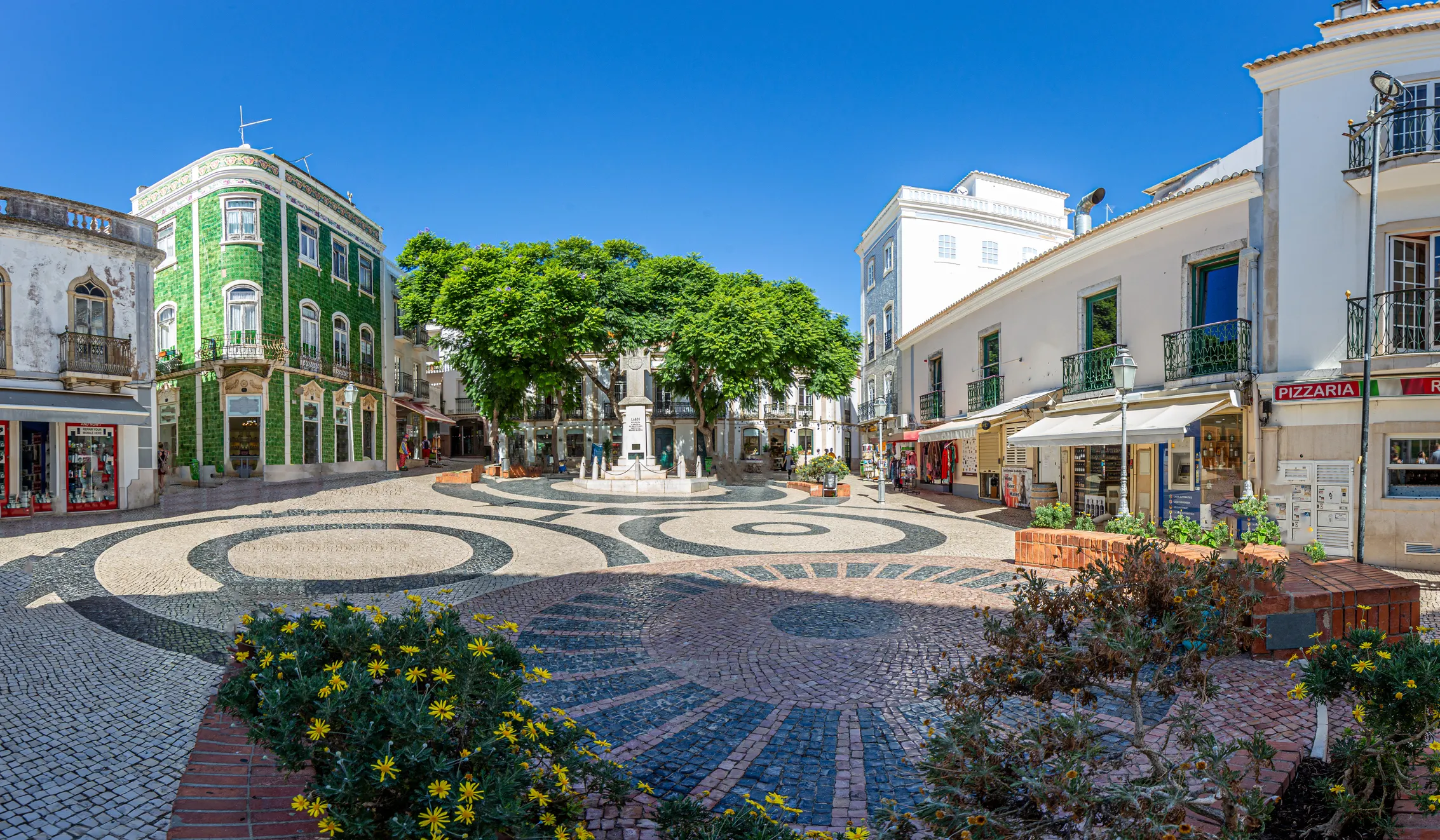
©iStock/Pictures-and-Pixels
Lagos is in the western Algarve, Portugal’s southernmost region, where inviting sands lure beach lovers with the promise of perfect weather. Summer temperatures range from around 68 F to 82 F and drop by 20 F in winter on average.
The region has much to recommend it. Lagos is a popular resort town—it is sometimes referred to as “Little England”—yet somewhat less touristy than others. Prices relax a bit just 10 minutes from the town center, where white, terracotta-topped houses and bougainvillea-draped duplexes suggest low-key suburban life.
Nearby cities have points in their favor, but Lagos is the winner in livability, proximity to amenities, and professional healthcare. “I have an incredible lifestyle for about 40% less than I was spending in snowy Michigan,” says Glenda. As a single working mom with a high-pressure job, Glenda’s life was stressful. “When school began to call about my then-teenage son’s latest behavioral antics, it was the last straw,” she says. Over the next years, she began to explore the idea of living in Europe.
“I envied laidback Europeans, who smiled a lot and hung out with each other over fences, in town squares, at the bakery… Why couldn’t I live like that?” she says. “Then, I started reading International Living… and realized I could live like those relaxed, easy-going Europeans.”
After visiting Lagos with her son, she knew it was her dream retirement destination. “I was amazed at the prices of the homes for sale. When I filled in my Portugal cost-of-living spreadsheet, the deal was sealed. I could retire earlier than planned… and live a life I’d never dreamed of.”
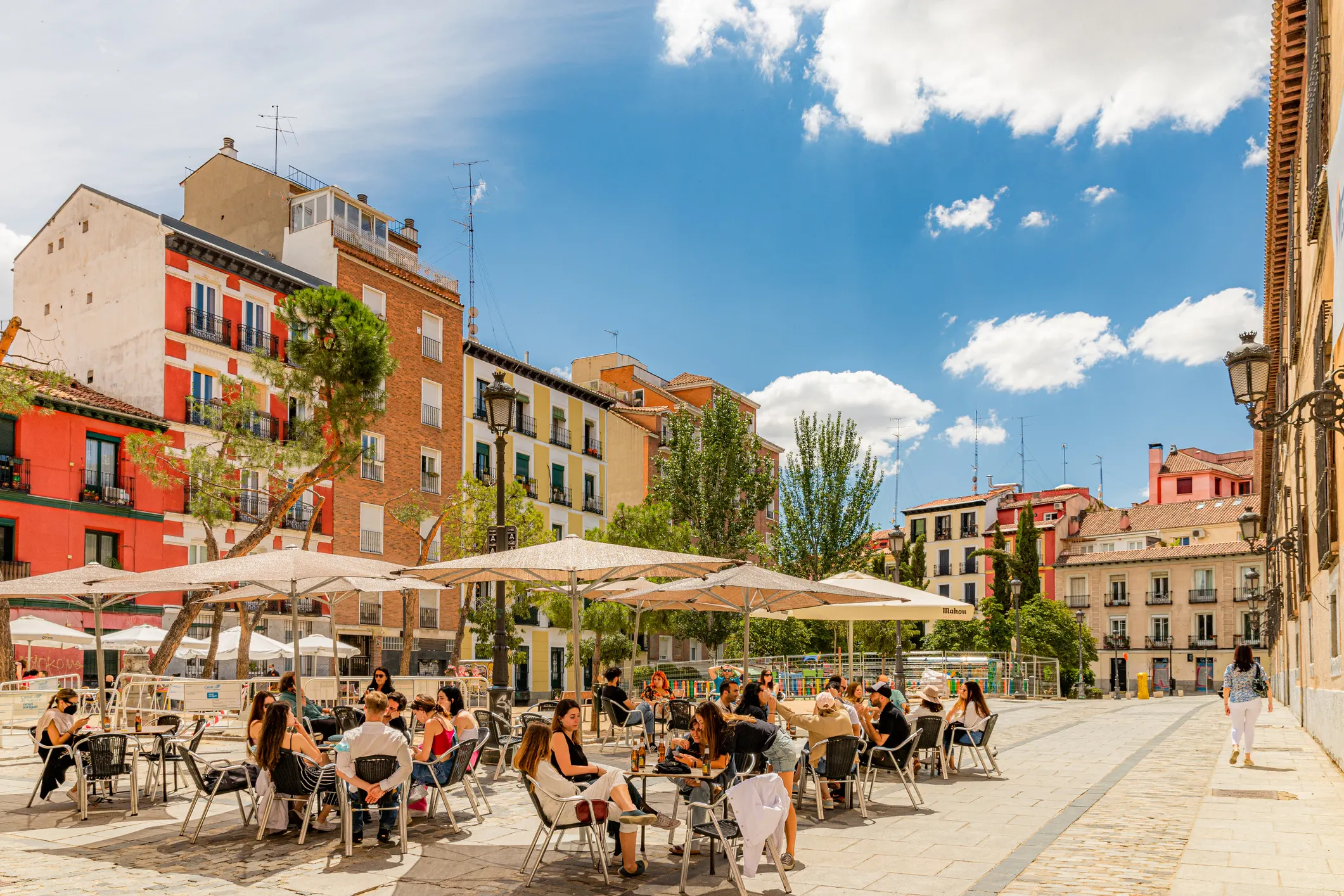
©iStock/Sami Auvinen
Madrid, Spain’s capital, is a cosmopolitan city overflowing with museums, elegant restaurants, and a vibrant nightlife. Yet it remains a fully functioning metropolis, focused more on business and banking than tourism. Because of this, it has a thoroughly lived-in vibe, and Madrileños are generally friendly and open to visitors.
This sophisticated European capital offers first-world infrastructure and sunshine at a modest price. Located in the center of the Iberian Peninsula, at an altitude of 2,000 feet, Madrid’s climate is warm and dry. In fact, it’s the driest capital in Europe, with most of its average annual 16.6 inches of rain falling in spring and fall.
Madrid’s public transportation is so efficient and inexpensive that owning a car is unnecessary. Tap water is not only drinkable, it’s delicious. Madrileños love to socialize. Sidewalk cafés, terrazas, and parks are always crowded and convivial. Meeting friends in bars and coffee shops for conversation and camaraderie is a sacrosanct ritual that is not impacted by any financial crisis. During the hot summer months, madrileños live at night. Streets are quiet during the day, but cafés fill to overflowing after sundown. Free concerts start at 10 p.m.
“In 2016, one of my former students invited me to visit him in Madrid. I had never really considered Europe because I had a preconceived idea that it would be too expensive. But I took a chance and went… and I didn’t regret it,” says Marsha Scarbrough.
“You can walk on the streets at any time of the day or night as a woman alone and not even think about it. There might be a couple of pickpockets, but there is almost no violent “crime. People don’t have guns. To me, that was a big plus.”
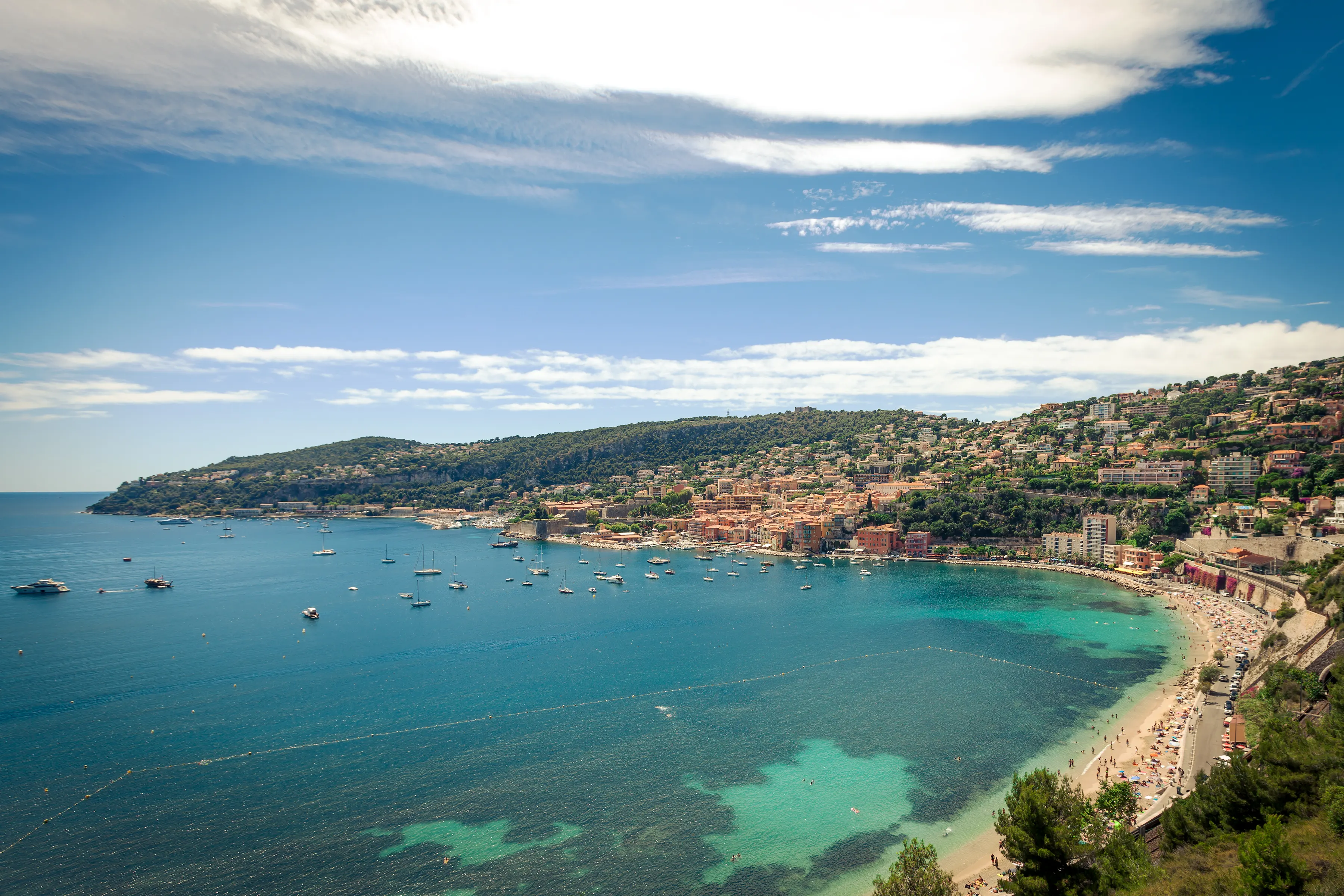
©iStock/princegarik
The Côte d’Azur, known the world over as the French Riviera, is synonymous with dazzling wealth and a lavish, champagne-soaked lifestyle. From the 19th century until World War II, this was the legendary winter playground of well-to-do expats. The likes of Hemingway, Picasso, and Scott Fitzgerald cavorted in Nice during the roaring ‘20s.
But despite its glamorous history and prime location on the Mediterranean, many parts of this region are unexpectedly accessible and affordable.
One of our favorite coastal towns is Antibes, a charming old port with medieval ramparts facing the sea and a harbor packed with sleek, ocean-going yachts. Although the Antibes Juan-les-Pins area is home to 70,000 people, the town itself doesn’t feel overwhelming. The old town is the perfect place to enjoy your afternoon when you’re not sunbathing on the beach, exploring museums, or the lighthouse around Cap d’Antibes.
Patty Sadauskas, a former CEO and credit union director, fell for nearby Nice after living in Paris. Renting an apartment near the Mediterranean Sea agrees with Patty, whose eyes light up when talking about her adopted home. “It’s just so easy to live here.” She says. “You can rent a one-bedroom apartment for €800 to €1,000 ($796 to $995), and you don’t need a car.” In fact, she uses the bus network to take day trips along the French Riviera. She often times her visits to coincide with the weekly farmer’s markets in beautiful seaside towns like Villefranche-sur-Mer and Cap Ferrat.
Chiang Mai, Thailand

©iStock/SeanPavonePhoto
Enjoy all the amenities of modern city life at a fraction of the cost that you’d pay back home. With easy access to healthy outdoor markets, affordable real estate, and a large expat community, it’s obvious why Chiang Mai remains so popular. For those who prefer a more rural lifestyle, there are many affordable properties just outside the city limits.
A retiree hotspot, Chiang Mai has a well-established Expat Club, making assimilation easier for singles. It appeals to many expats because it has managed to retain its local traditions and culture while providing all the modern amenities that are sought after by its newest residents.
Excellent healthcare facilities, good shopping, beautiful nearby countryside, and an active art and cultural scene all make this city a great place to live.
Rachel Devlin’s mother had been snowbirding in Thailand for a few years. “People move here to live cheaply and are having the most wonderful lives. Why don’t you find a way to come over?” she said. Soon, Rachel found herself following suit.
“Living expenses are relatively low. Expats have found excellent rentals for less than $500 a month—and we’re not talking studio apartments. Imagine a three-story townhouse with five bedrooms, four bathrooms, office space, and a large kitchen…for $350 per month,” she says.
“You can live comfortably on $2000 per month, even in the center of town. The International Airport is located in town, so access to everywhere else is very convenient. Flights to Bangkok and the beaches further south can be as cheap as $50 or less,” says Steve LePoidevin.
Simply enter your email address below to sign up for our free daily postcard e-letter and we’ll also send you a FREE report on The World’s Top 10 Retirement Havens for 2024.
By submitting your email address, you will receive a free subscription to IL Postcards and special offers from International Living and our affiliates. You can unsubscribe at any time, and we encourage you to read more about our Privacy Policy.



